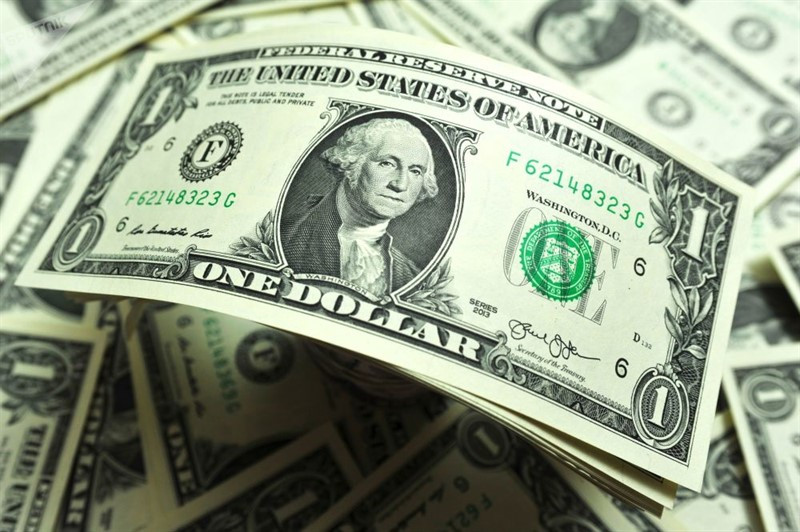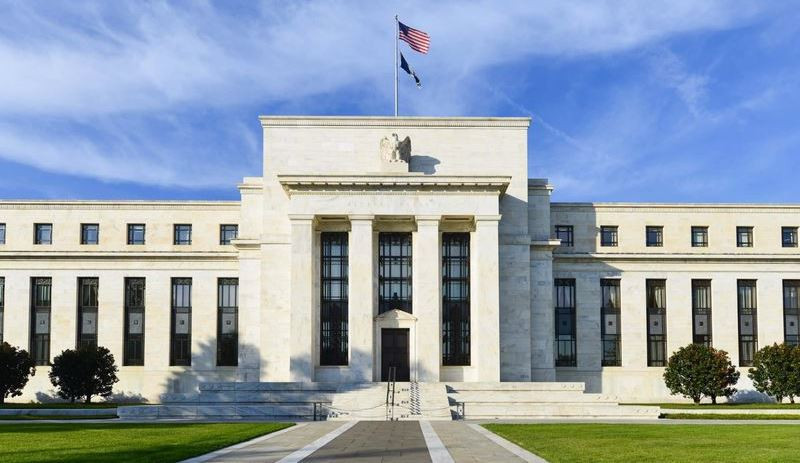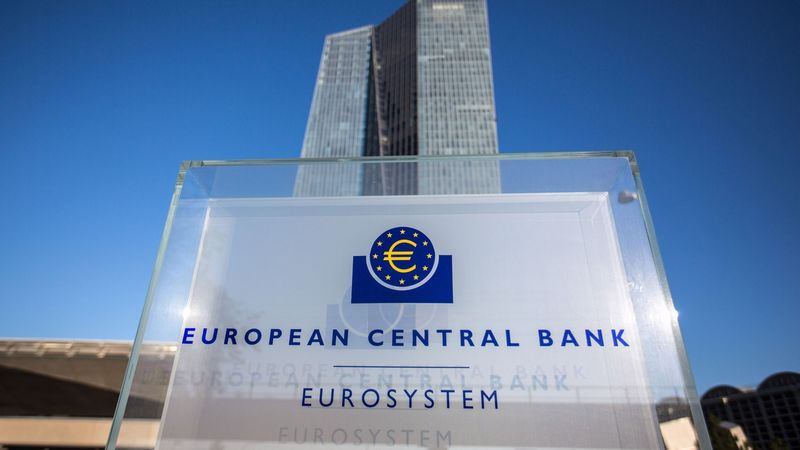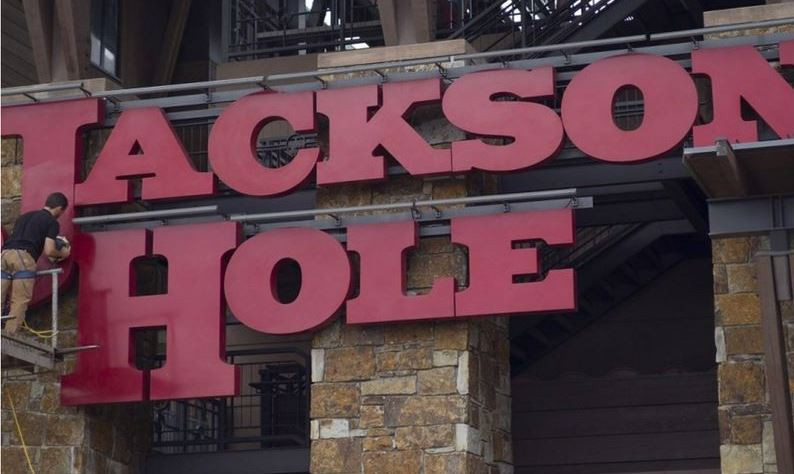
The greenback started moving again this week, rushing to recent highs.
The dollar is on track for weekly growth of almost 2.5%, which will be its best weekly performance since June 12.
The USD index managed to quickly return above the 50-day moving average, which has been serving as support for more than a year.
It is possible that the dollar may soon retest the peak levels of July, when the US currency exceeded 109 points, and the EUR/USD pair briefly fell below the important watershed of 1.0000.
If the global macroeconomic picture does not change significantly, we should expect that greenback bulls will be able to push it to new multi-year highs.
"The time to see the peak of the dollar is coming, but it has not yet come, especially since the key factor inclining the US currency to decline is the forecast of global growth. The USD turnaround will require patience and better data, but it's a healthy reminder to stay alert," TD Securities strategists said.
Rabobank still expects that the dollar will enjoy good support against a wide basket of currencies in the coming months.
"The Fed's hawkish attitude is not the only driving force for the greenback. We still believe that the dollar will enjoy good support in the coming months due to the demand for safe havens," the bank's analysts said.
They note the risks of another movement of the EUR/USD exchange rate below the parity level in the coming months.
Since the beginning of the week, the main currency pair has lost more than 200 points.
After two days of relative stabilization on Thursday, it turned sharply to the downside. EUR/USD remains under bearish pressure on Friday, trading around 1.0030-1.0050.

"The dollar famously rose after the Fed leaders unanimously made it clear that the central bank will continue to raise rates, although their opinions differ on the size of the increase," National Australia Bank analysts said.
"It is difficult to explain the weakening of the euro with concrete news, but its further decline on the prospects of the global economy is quite obvious," they added.
Data released on Friday showed that producer prices (PPI) in Germany rose 5.3% month-on-month in July, which was their biggest increase since the Federal Reserve began registering data in 1949. Over the year, prices have increased by a record 37.2%.
Although renewed concerns about inflation will increase pressure on the European Central Bank to raise interest rates again in September, this is unlikely to help the single currency, as investors seem more concerned about the risk of recession.
The ECB will continue to raise interest rates to curb inflation, member of the ECB Governing Council Martins Kazaks said on Thursday.
"At the moment, we see that inflation is unacceptably high. The ECB's monetary policy has become tougher since December last year. Initially, we reduced support programs, and then also significantly increased interest rates. We will continue to raise them to prevent inflation from taking root," he said.
The inflation forecast in the eurozone has not improved after the July rate hike, ECB representative Isabelle Schnabel said yesterday. She does not rule out that in the short term, inflation will continue to grow.
"This inflationary pressure is likely to be with us for some time; it will not disappear quickly. It will take some time until inflation returns to 2%," Schnabel believes.
Her comments suggest she is in favor of another significant interest rate hike next month.

Although a rate hike in September is considered a done deal, members of the ECB's Governing Council are divided on a 25 or 50 basis point hike.
Despite the hawkish statements of ECB politicians, the single currency maintained a negative attitude, remaining near the weakest levels since July 15.
The EUR/USD pair is sliding to the lowest levels since mid-July, not far from parity, which will not please the ECB, ING economists say. They expect the pair to remain under bearish pressure.
"It seems that the ECB really has a problem with the weakening of the euro – judging by yesterday's statements by representatives of the central bank. But in order to raise the EUR/USD exchange rate in the context of the energy crisis, the ECB will have to become much more hawkish. This is a difficult task when a recession is just around the corner," ING noted.
The weakening of the euro was a consequence of the widening difference in yields on both sides of the Atlantic. The divergence in nominal rates on two-year US and German government bonds increased in early August to the highest level in three years, reaching 2.87%.
Commerzbank analysts also expect that the single currency will remain under downward pressure, as the ECB lags behind the Fed in terms of tightening policy.
"Discussions about whether the ECB will raise its key rate by 25 or 50 basis points in September only underline how clearly the central bank is lagging behind its American counterpart in terms of tightening policy. And this is becoming an increasing problem for the euro, as the prospects for economic growth in the region become increasingly gloomy," they said.

"The headwinds for the eurozone economy will intensify in winter. In particular, the continuing threat of gas shortages and high energy prices worsen the prospects for economic growth. This has a negative impact on demand, and is also likely to increase price pressure. The ECB is in danger of falling further behind other central banks. At the moment, this does not bode well for the euro," Commerzbank believes.
The EUR/USD pair strengthens the weakness and extends the breakthrough of the 1.0100 level at the end of the week.
In the short term, further losses are possible, as well as a visit to the parity level. The loss of this key support area may lead to a deeper drawdown and retesting of multi-year lows around 0.9950.
On the long-term horizon, a bearish view of EUR/USD will prevail as long as it trades below the 200-day moving average at 1.0860.
While the weakening of the euro is a headache for ECB officials, their colleagues from the Federal Reserve welcome the strengthening of the dollar, believing that it contributes to suppressing import prices and achieving the central bank's goal of returning inflation to the target level of 2%.
The statements made by the representatives of the Fed indicate that there is a split in the central bank between those who want to raise rates quickly and those who are more cautious because of the potential damage to the labor market and the risk of an increase in the unemployment rate in the United States, which now stands at 3.5%.
St. Louis Fed President James Bullard said he would like to bring the Fed's benchmark rate to the target range of 3.75% to 4.00% by the end of this year.
"I really don't understand why we could postpone raising interest rates for next year," said Bullard.
"We have pretty good economic indicators, and we have very high inflation, so I think it makes sense to raise the rate higher, to a level limiting economic activity," he added.
The head of the San Francisco Fed, Mary Daly, believes that it would be reasonable to bring the cost of short-term borrowing to just above 3% by the end of this year.
"The slowdown in the global economy is a headwind for economic growth in the United States. We have to take this into account, as we are making sure not to overdo it with the tightening of the policy," she said.
However, the last word always remains with Fed Chairman Jerome Powell.
He will have the opportunity to inform investors about his views at the annual symposium in Jackson Hole, which will be held on August 25-27.

Most likely, the head of the Fed will not be able to give the market more guidance on how high the cost of borrowing in the US may be and how long they will have to stay at this level.
However, Powell's position should remain unchanged: the central bank will not stop tightening monetary policy until it is fully convinced that inflation is on the decline.
"Raising the interest rate for a longer period seems to be the further course of the Federal Reserve. We expect that it will raise the rate by at least 125 bps and keep it at this level," Danske Bank said.
The Fed's interest rate hike traditionally supports the US currency exchange rate.
The greenback has been growing for the third consecutive session. It set new multi-week highs just above the 108.00 mark on Friday.
If the upward momentum increases, the dollar bulls' next targets will be the high since the beginning of the year in the area of 109.30, the peak of September 2002 at 109.75, as well as the round level of 110.00.
It is expected that the greenback will maintain a short-term positive attitude while it is above the six-month support line at 104.90.
At the same time, the long-term bullish forecast for USD remains in force as long as it is trading above the 200-day moving average at 100.35.
 English
English 
 Русский
Русский Bahasa Indonesia
Bahasa Indonesia Bahasa Malay
Bahasa Malay ไทย
ไทย Español
Español Deutsch
Deutsch Български
Български Français
Français Tiếng Việt
Tiếng Việt 中文
中文 বাংলা
বাংলা हिन्दी
हिन्दी Čeština
Čeština Українська
Українська Română
Română

